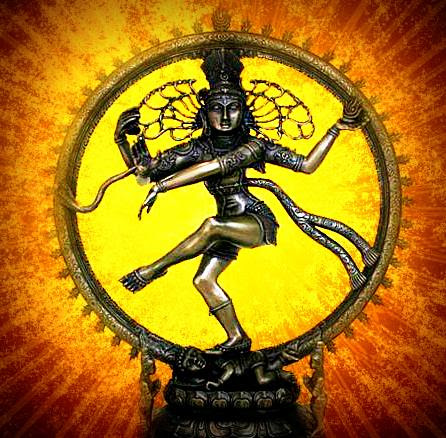
|| तत्वबोध -- 36||
The five koSAs.. TB-36
मनोमय कोश: कह? manomayakoSa: ka:?
What is the mind koSam? is the the Q by the student.. The teacher then replies:
मनश्च ज्ञानेन्द्रियपन्चकं मिलित्वा यो भवति स: मनोमय कोश: |TB-36|
manaSca gnAnEndhriya pancakam milithvA yo Bavathi sa: manomaya koSa: |TB-36|
manaSca = mind and gnAnEndhriya pancakam = the five organs of knowledge milithvA = mix together yo Bavathi = and forms (a koSam) sa: = that koSam is (known as) manomaya = mind koSa: = koSam.
I am very carefully avoiding the use of the word "sheath" here, because the word koSam can drive us into a frenzied activity of "SHEATH REMOVAL". Then along comes a modern guru who quotes this thatithrIya SRthi.. and sounds almost acceptable, and charges the wealthy among us hefty sums of money where these sheaths can be removed one after the other systematically and then assures us the experience of the "inexplicable" AthmA bliss.. shining inside these five sheaths like a shining star.. You see.. our indian scriptures is a GOLD MINE for those who want to mint money in teaching (cheating?) us how to experience AthmA!
In TB, the SAsthram is very deliberate.. in the prANamaya kOSam it explained ONLY the prANic activities and the five vital airs associated with the the karmEndhriyAs activity, even while asleep.!
HERE THE GURU TAKES US IFROM THE MOST GROSS KOSAM (PHYSICAL BODY) to the next subtler kOSam (prANamaya) to the next subtler koSam called manomayam.. As the subtlty increases, gross-ness decreases.. and the permeation (vyApakathvam) increases.
That is how it is.!
So the organs of knowledge (which are subtler than the organs of action) "Party" together with the mind.. and forms an universe called manomaya koSam.
Actions can be seen.. but thoughts can NOT be seen.. hence the higher level of subtlety.
What does the mind itself do with the information provided by the organs of knowledge? TB is not that quick in giving the answer.. as it is to be unfolded after how mind itself if formed and what are the qualities of mind.. that comes later.!
विज्ञानमय: क:? What is vignAnamaya koSam?
बुद्धि: च = (Our) intellect and ज्ञानेन्द्रिय पञ्चकं = five organs of knowledge मिलित्वा = mix together and यो भवति = (thus) which is produced स: = that (is known as) विज्ञानमय कोश: = Intellect koSam.
Here the guru goes to explain further subdivisions of our internal organs known as "antha:karaNam" with which the jIva happily interacts with the entire universe around us..
The primary orgnas of knowledge will always be ears, skin, eyes, nose, and tongue with which we experience the universe and gather "data" for investigation..
This data set is really sounds, feel, forms/colors, smells, and tastes RESPECTIVELY as explained earlier..
These organs of knowledge do not tell us if these experience universe if good, bad, or indifferent.. THAT IS THE JOB OF THE JIVA..!
Then by ISvara's order, all these organs of knowledge ARE outwardly..
So there is no way they will report the truth about ourselves.. This is quite important because, we always think that we can pick up any book, read about ourselves, and know precisely who and what we are (AS EVIDENCED BY COUNTLESS COMMUNITIES IN THIS ORKUT MEDIUM..!!)
There are actually four internal organs as defined by the scriptures.. Only two are EXPLICITELY mentioned in the five-koSa analysis.. The other tow come much later.. That is the beauty of TB as well as the difficulty in defining complex entities like humans, god, creation, gnAnam, karma, mukthi, etc..
So at his point the guru says we operate at the manomaya level identifying ourselves with the mind koSam. We also operate at the vignAna maya koSam level identifying ourselves with the intellect we all possess.
So the readers at this point must merely be satisfied with the fact that a human being was explained at the three states of existence namely waking, dream, and deep sleep. Now the same human being can be explained also fromt he view point of the five koSa level that we all operate from..
More explanations to follow .!
.